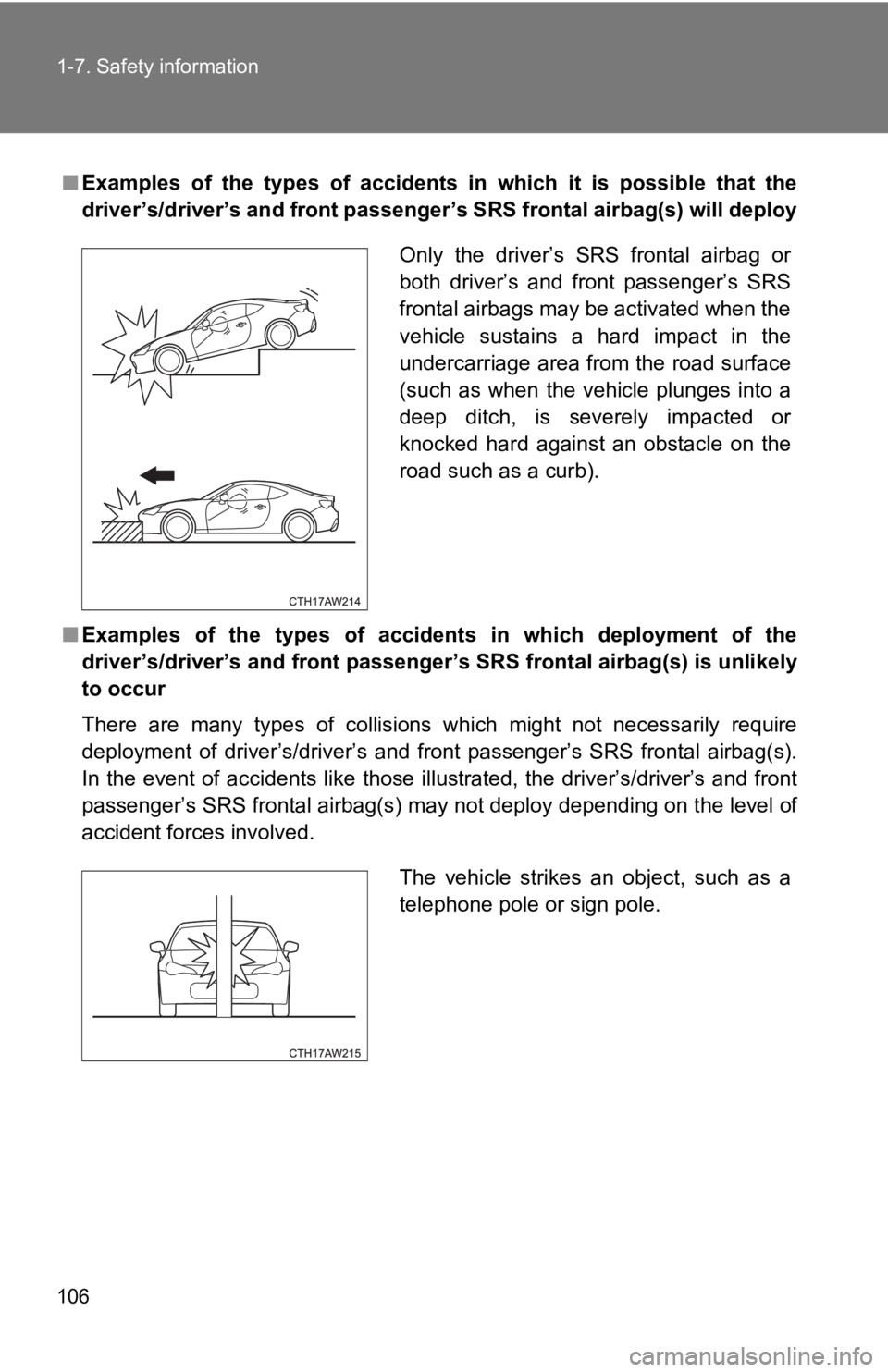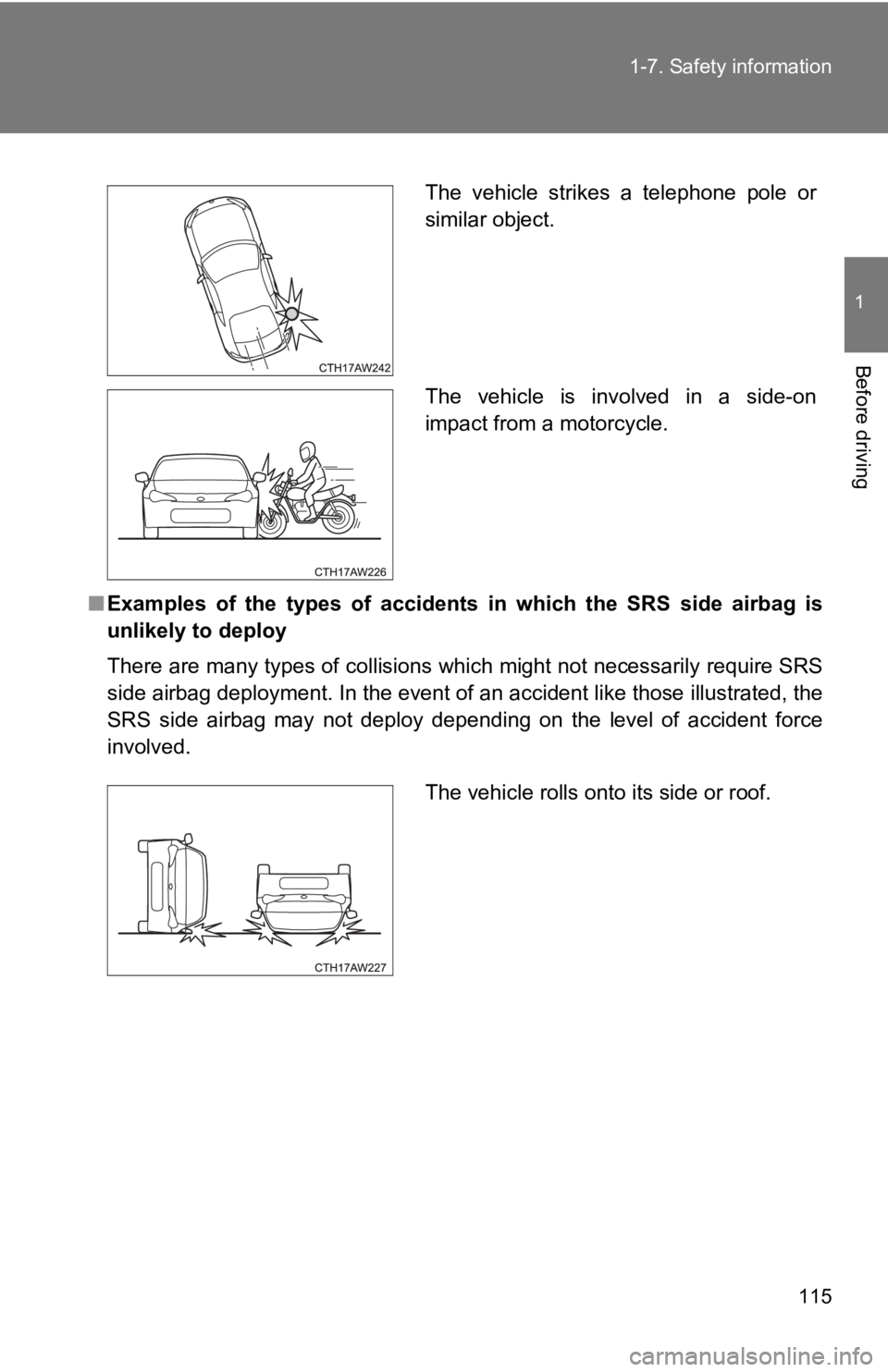2020 TOYOTA 86 phone
[x] Cancel search: phonePage 3 of 532

1
2
3
4
5
6
7
3
2-2. Instrument clusterGauges and meters ............ 191
Indicators and warning lights ................................. 194
Multi-information display (monochrome display) ...... 200
Multi-information display (color display) ................... 207
2-3. Operating the lights and windshield wipers
Headlight switch .................. 222
Fog light switch ................... 228
Windshield wipers and washer .............................. 229
2-4. Using other driving systems
Cruise control ...................... 232
Rear view monitor system .............................. 237
Driving assist systems ........ 245
Hill-start assist control ......... 252
2-5. Driving information Cargo and luggage ............. 256
Vehicle load limits ............... 260
Winter driving tips ............... 261
Trailer towing ...................... 265
Dinghy towing ..................... 266 3-1. Using the air conditioning
system and defogger
Manual air conditioning system .............................. 268
Automatic air conditioning system .............................. 275
Rear window and outside rear view mirror
defoggers ......................... 284
3-2. Using the audio system Using the AUX/USB port .... 286
Steering wheel audio switches ........................... 287
Using the microphone ........ 288
3-3. Using the interior lights Interior lights list ................. 289
• Interior light ...................... 290
3-4. Using the storage features
List of storage features ....... 291
• Glove box ......................... 292
• Bottle holders ................... 293
• Cup holders/ console tray ...................... 294
3Interior features
Page 9 of 532

9
B
AA
Anti-glare inside rear view mirror P. 68
Interior light P. 290
Vanity mirrors P. 297
Sun visors P. 296
Inside door lock buttons P. 44
Outside rear view mirror switch
P. 69
Window lock switch P. 72
Power window switches
P. 72
Door lock switch P. 43
Microphone P. 288
Rear view monitor P. 237
Page 19 of 532

19
Scrapping of your Toyota
The SRS airbag and seat belt pretensioner devices in your Toyota contain
explosive chemicals. If the vehicle is scrapped with the airbags and seat belt
pretensioners left as they are, this may cause an accident such as fire. Be
sure to have the systems of the SRS airbag and seat belt preten sioner
removed and disposed of by a qualified service shop or by your To y o t a
dealer before you scrap your vehicle.
Perchlorate Material
Special handling may apply, See www.dtsc.ca.gov/hazardouswaste/ perchlorate.
Your vehicle has components that may contain perchlorate. These
components may include airbag, seat belt pretensioners, and wir eless
remote control batteries.
WARNING
■ General precautions while driving
Driving under the influence: Never drive your vehicle when unde r the influ-
ence of alcohol or drugs that have impaired your ability to ope rate your vehi-
cle. Alcohol and certain drugs delay reaction time, impair judg ment and
reduce coordination, which could lead to an accident that could result in
death or serious injury.
Defensive driving: Always drive defensively. Anticipate mistake s that other
drivers or pedestrians might make and be ready to avoid acciden ts.
Driver distraction: Always give your full attention to driving. Anything that dis-
tracts the driver, such as adjusting controls, talking on a cel lular phone or
reading can result in a collision with resulting death or serio us injury to you,
your occupants or others.
■ General precaution regarding children’s safety
Never leave children unattended in the vehicle, and never allow children to
have or use the key.
Children may be able to start the vehicle or shift the vehicle into neutral.
There is also a danger that children may injure themselves by p laying with
the windows or other features of the vehicle. In addition, heat build-up or
extremely cold temperatures inside the vehicle can be fatal to children.
Page 31 of 532

31
1-2. Opening, closing and locking the doors and trunk
1
Before driving
■
Conditions affecting operation
The smart key system uses weak radio waves. In the following si tuations,
the communication between the electronic key and the vehicle ma y be
affected, preventing the smart key system, wireless remote control and
engine immobilizer system from operating properly.
(Way of coping P. 441)
● When the electronic key battery is depleted
● Near a TV tower, electric power plant, gas station, radio stati on, large dis-
play, airport or other facility that generates strong radio wav es or electri-
cal noise
● When the electronic key is in contact with, or is covered by th e following
metallic objects
• Cards to which aluminum foil is attached
• Cigarette boxes that have aluminum foil inside
• Metallic wallets or bags
• Coins
• Hand warmers made of metal
• Media such as CDs and DVDs
● When other wireless keys (that emit radio waves) are being used nearby
● When carrying the electronic key together with the following de vices that
emit radio waves
• A portable radio, cellular phone, cordless phone or other wire less com-
munication device
• Another vehicle's electronic key or a wireless key that emits radio
waves
• Personal computers or personal digital assistants (PDAs)
• Digital audio players
• Portable game systems
● If window tint with a metallic content or metallic objects are attached to
the rear window
● When the electronic key is placed near a battery charger or electronic
devices
Page 35 of 532

35
1-2. Opening, closing and locking the doors and trunk
1
Before driving
■
Electronic key battery depletion
●The standard battery life is 1 to 2 years.
● If the battery charge becomes low, a buzzer will sound in the c abin and a
message will be displayed on the multi-information display when the
engine is stopped. ( P. 414)
● As the electronic key always receives radio waves, the battery will
become depleted even if the electronic key is not used. The following
symptoms indicate that the electronic key battery may be depleted.
Replace the battery when necessary. (P. 363)
• The smart key system or the wireless remote control does not o perate.
• The detection area becomes smaller.
• The LED indicator on the key surface does not turn on.
● To avoid serious deterioration, do not leave the electronic key close to
any of the following electrical appliances that produce a magne tic field:
•TVs
• Personal computers
• Cellular phones, cordless phones and battery chargers
• Recharging cellular phones or cordless phones
• Induction cookers
• Table lamps
■ When the electronic key battery is fully depleted
P. 363
■ If the smart key system has been d eactivated in a customized setting
● Locking and unlocking the doors, unlocking the trunk: Use the w ireless
remote control or mechanical key. ( P. 38, 441)
● Starting the engine and changing “ENGINE START STOP” switch
modes: P. 4 4 2
● Stopping the engine: P. 444
■ Customization that can be configured at Toyota dealer
Settings (e.g. smart key system) can be changed.
(Customizable features: P. 487)
Page 41 of 532

41
1-2. Opening, closing and locking the doors and trunk
1
Before driving
■
Security feature
If a door is not opened within approximately 60 seconds after t he vehicle is
unlocked, the security feature automatically locks the vehicle again.
■ Alarm (vehicles with a smart key system)
Using the wireless remote control to lock the doors will set th e alarm system.
( P. 82)
■ Conditions affecting operation
Vehicles without a smart key system
The wireless remote control function may not operate normally i n the follow-
ing situations:
● When the wireless key battery is depleted
● Near a TV tower, electric power plant, gas station, radio stati on, large dis-
play, airport or other facility that generates strong radio wav es or electri-
cal noise
● When carrying a portable radio, cellular phone or other wireles s commu-
nication devices
● When the wireless key is in contact with, or is covered by a me tallic
object
● When other wireless key (that emit radio waves) is being used n earby
● If window tint with a metallic content or metallic objects are attached to
the rear window
Vehicles with a smart key system
P. 31
■ If the wireless remote control do es not operate properly (vehicles with
a smart key system)
Locking and unlocking the doors, unlocking the trunk: Use the m echanical
key. ( P. 441)
■ Key battery depletion
Vehicles without a smart key system
If the wireless remote control function does not operate, the b attery may be
depleted. Replace the battery when necessary. (P. 363)
Vehicles with a smart key system
P. 35
Page 106 of 532

106 1-7. Safety information
■Examples of the types of accidents in which it is possible that the
driver’s/driver’s and front passenger’s SRS frontal airbag(s) w ill deploy
■ Examples of the types of accidents in which deployment of the
driver’s/driver’s and front passe nger’s SRS frontal airbag(s) is unlikely
to occur
There are many types of collisions which might not necessarily require
deployment of driver’s/driver’s and front passenger’s SRS front al airbag(s).
In the event of accidents like those illustrated, the driver’s/driver’s and front
passenger’s SRS frontal airbag(s) may not deploy depending on t he level of
accident forces involved.
Only the driver’s SRS frontal airbag or
both driver’s and front passenger’s SRS
frontal airbags may be activated when the
vehicle sustains a hard impact in the
undercarriage area from the road surface
(such as when the vehicle plunges into a
deep ditch, is severely impacted or
knocked hard against an obstacle on the
road such as a curb).
The vehicle strikes an object, such as a
telephone pole or sign pole.
Page 115 of 532

115
1-7. Safety information
1
Before driving
■
Examples of the types of accidents in which the SRS side airbag is
unlikely to deploy
There are many types of collisions which might not necessarily require SRS
side airbag deployment. In the event of an accident like those illustrated, the
SRS side airbag may not deploy depending on the level of accide nt force
involved.
The vehicle strikes a telephone pole or
similar object.
The vehicle is involved in a side-on
impact from a motorcycle.
The vehicle rolls onto its side or roof.